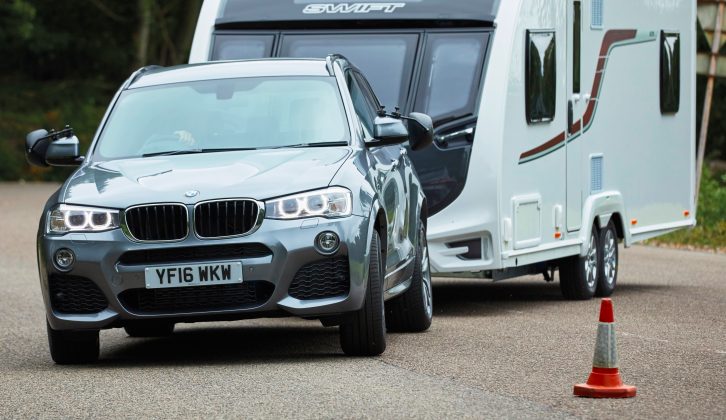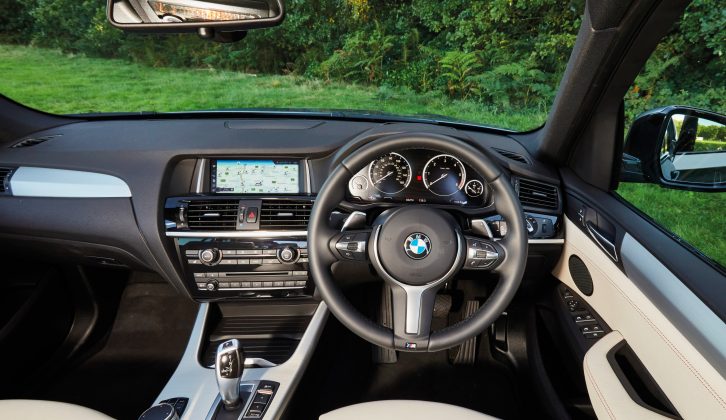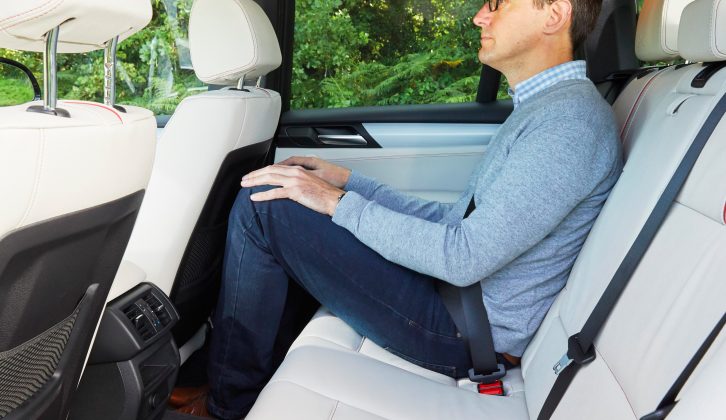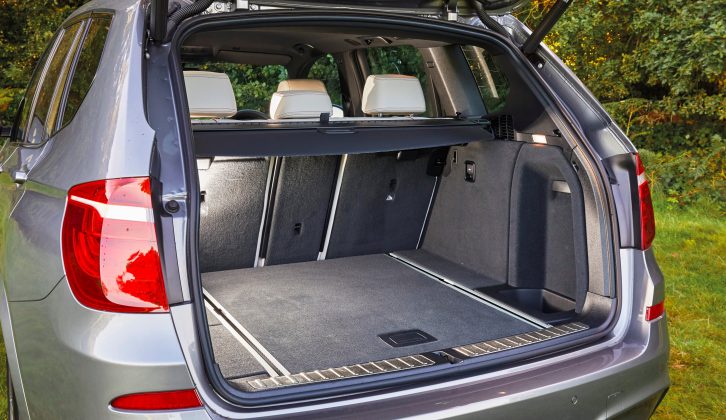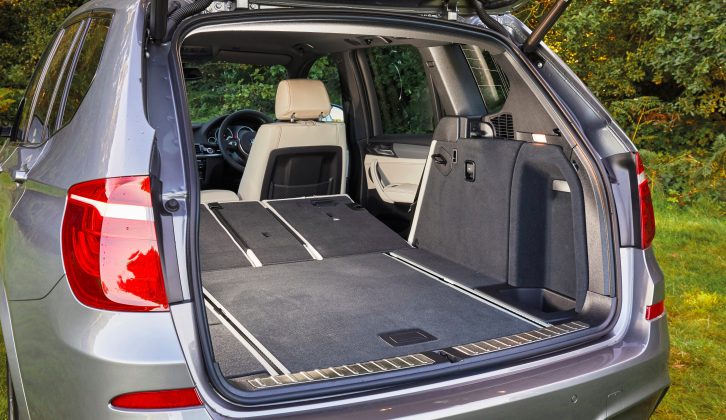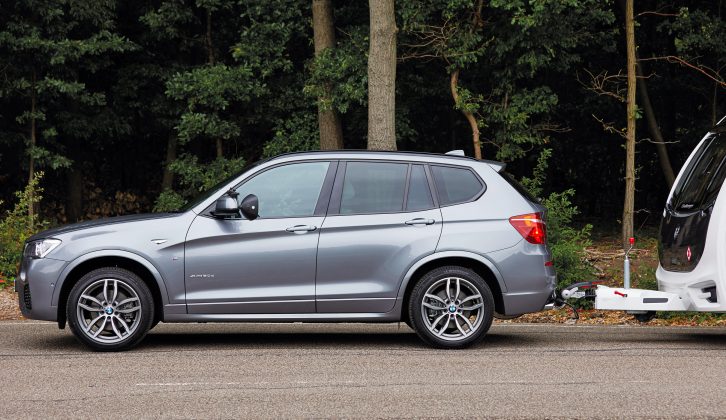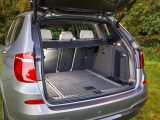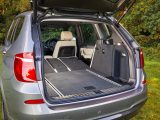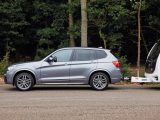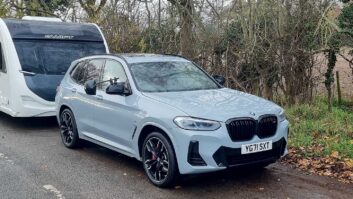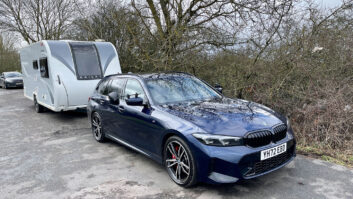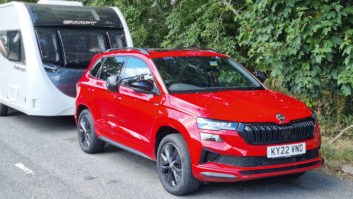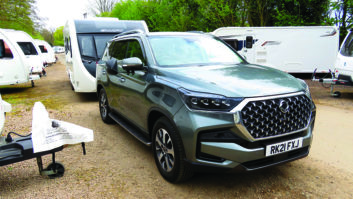Verdict
A Porsche Macan is a more exciting drive on a country road and a Land Rover Discovery Sport is more practical.
But the BMW X3 is ageing well, still makes a very impressive tow car and has one of the best infotainment systems you can buy.
It’s good to drive, practical and stable with a caravan behind.
Pros
It has a usefully heavy kerbweight
It’s stable and composed when towing
Cabin and boot space are both generous
The brakes are strong
Cons
Refinement could be better
The original BMW X3 was one of the first mid-sized 4x4s from a prestige brand.
The second generation has been around since 2010, but was revised in 2014. Changes included a more economical new 2.0-litre diesel engine.
We’ve been testing this version with and without a caravan. So, what are we looking for as we assess what tow car ability the BMW X3 has?
In a tough marketplace, it’s quite simple. Are the latest revisions enough to keep the X3 competitive against rivals such as the Jaguar F-Pace, Land Rover Discovery Sport and Porsche Macan?
The BMW X3’s stopping power really impressed us, needing only 9.8 metres from 30mph
Towing
You can bet that the next X3, due in 2017, will be lighter than today’s car. With a kerbweight of 1820kg, it’s quite heavy for a mid-sized SUV.
That’s a good thing if you have a hefty caravan, though. An 85% match for the X3 is 1547kg.
We matched the BMW to a Swift Challenger 635 with a Mass in Running Order of 1540kg. Despite a total weight for the outfit not far shy of 3.5 tonnes, the 2.0-litre engine coped well.
With 188bhp and 295lb ft torque, there was enough pulling power to confidently haul the Swift up to speed. The X3 took 12.3 seconds to tow from 30-60mph, a respectable turn of pace but not a match for the 10.1-second time of the Mercedes-Benz GLC 250d towing the same caravan.
However, the BMW held speed well on steep hills, and the smooth eight-speed automatic gearbox made the most of the available performance.
The X3’s stopping power really impressed us. The brakes were easy to apply smoothly, but had real bite when we needed to stop in a hurry. A stopping distance of 9.8 metres from 30mph is among the best we’ve recorded.
We’ve no complaints about the BMW X3’s stability, either. At 60mph it was settled and in control, and changed direction in a quick and composed manner.
Our test car was fitted with Variable Damper Control (a £650 option), which allows the driver to alter the suspension settings. It works in tandem with Driver Performance Control, which adjusts other systems such as the steering, gearbox and throttle.
We found that ‘Comfort’ mode was best for towing.
Everyday Driving
There’s more benefit to playing around with the different settings in regular driving. ‘Sport’ weights up the steering, sharpens the throttle and makes the gearbox hold on to a lower gear for longer.
At the opposite extreme, ‘Eco Pro’ boosts fuel economy. However, for the majority of regular driving we stuck with ‘Comfort’. It’s reasonably supple, without compromising on body control at speed, and engine noise is kept to a minimum.
The engine is quieter than the diesel it replaced, but it still sounds gruff at high revs. There’s a lot of road noise, too.
But although refinement could be better, overall the BMW X3 is a satisfying and comfortable car.
Space
Today’s X3 is similar in size to the original X5, and that’s reflected in the generous interior space.
Up front, there’s plenty of head- and legroom, and a seating position that’s part way between the typically upright posture of an SUV and the more low-slung position of one of BMW’s saloons. However, we found the sports seats a little too narrow and restrictive.
The dashboard is clearly laid out, and the colour screen for the sat-nav and other systems is crisp and clear.
The iDrive rotary controller takes care of various systems (sat-nav, phone and so on), and it’s surrounded by shortcut buttons to help find the right menu quickly.
Rear-seat space is generous, and there are air vents between the front seats.
The boot has a useful 550-litre capacity with the seats upright, although the BMW lacks levers on either side of the tailgate to lower the rear seats (there are catches on top of the back seats).
Folding the rear seats down leaves a slight slope to the floor, but increases the boot capacity to 1600 litres.
Running Costs
What Car?’s Target Price research suggests that haggling should knock £2000 or so from the £38,590 asking price of this M Sport version. That gets you 19in alloys, a brushed-aluminium interior, sports seats, an auto transmission and more.
However, a bigger sat-nav screen costs at least £900 and many useful driver and safety aids are optional extras.
Fuel economy is good, with the BMW X3 returning an official combined figure of 54.3mpg. We achieved 26.3mpg while towing on a mixed route.
What Car? predicts a 46% return on the list price after three years and 36,000 miles.
Technical Specifications
| Engine Size | 1995 cc |
| Kerbweight | 1820 kg |
| 85% KW | 1547 kg |
| Towball Limit | 100 kg |
| Maximum Towing Limit | 2500 kg |
| Power | 188 bhp |
| Torque | 295 lb ft |
| Offical MPG | 54.3 mpg |
| CO₂ | 136 g/km |
